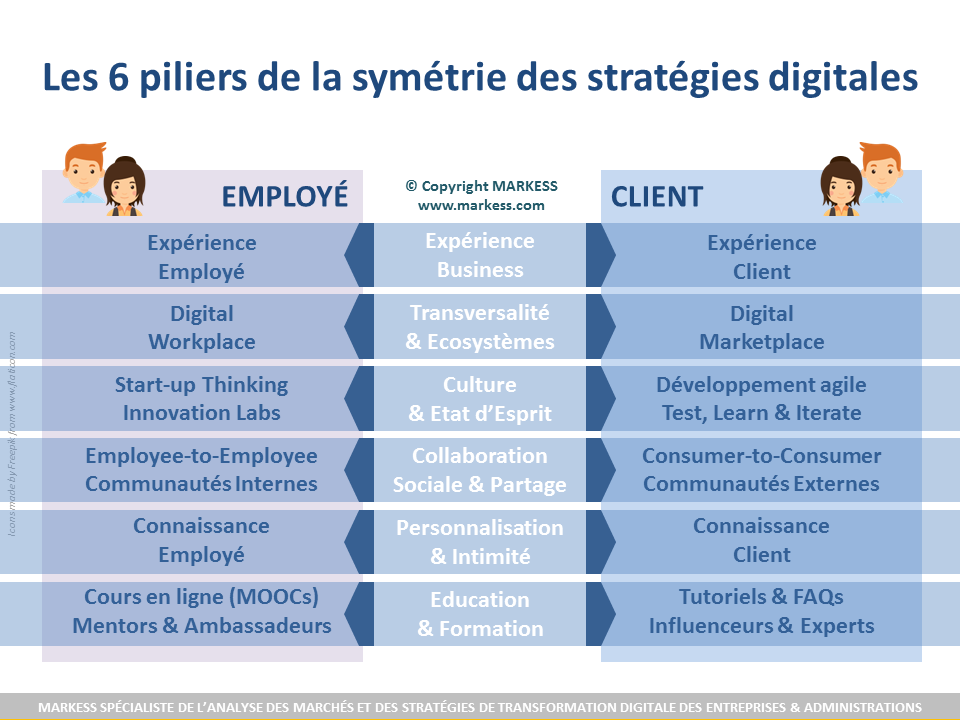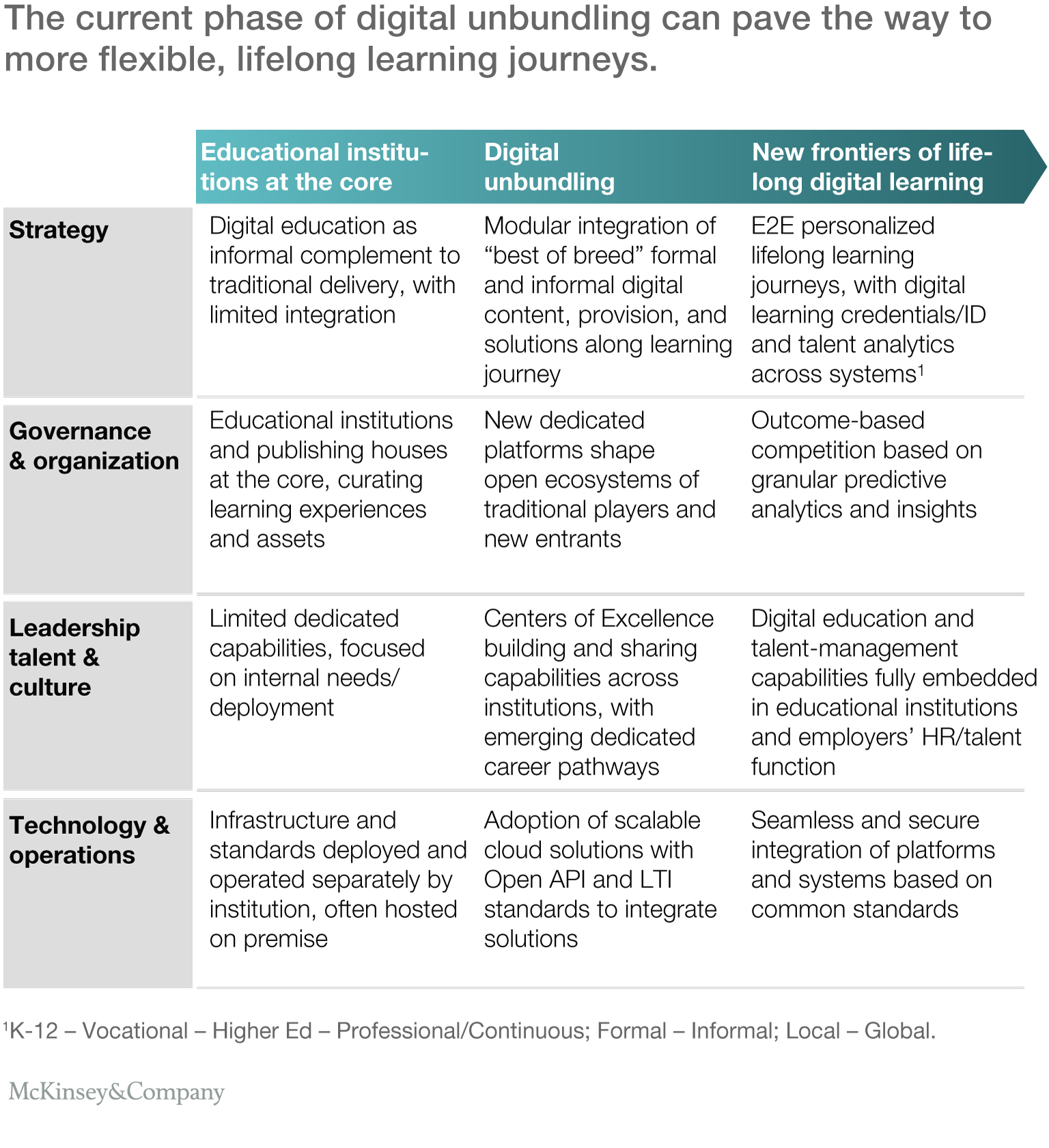-
« L’étroite relation qui existe entre la satisfaction des clients et la satisfaction des collaborateurs est un fait acté. Pour obtenir l’une, il est nécessaire de travailler sur l’autre et vice-versa. C’est ce parallélisme que met en avant la symétrie des attentions [1]. Les entreprises pourraient largement s’en inspirer pour leurs stratégies digitales et même aller plus loin ! »
-
« In emerging markets, the digital transformation of education is gaining traction, and all stakeholders can benefit if they seize new opportunities for collaboration. «
-
Microcredentials and badges can undistort demand by allowing learners to assemble their own modular learning pathways rather than requiring them to rely on bundled certificates, diplomas, or degrees curated by educational institutions
-
-
At the same time, the power of big-data analytics enables the creation of new value propositions, not only for adaptive or personalized programming, but also for competency-based and customized delivery and funding models as well as global digital degree programs
-
-
Common accreditation standards for digital curricula and credentials.
-
Transparency around outcomes
-
Data privacy regulations and IP rights.
-
Building and strengthening digital capabilities at all levels.
-
Efficient setup and deployment of secure IT infrastructure and devices.
-
-
« Strategy is evolving in unexpected ways, as Silicon Valley thought leaders discuss in McKinsey’s latest Discussions on Digital podcast. «
-
Part of the struggle is communicating the vision to the rest of the organization as you get bigger and broader, whether by geographic expansion or store openings.
-
My view is that the role of strategist, first and foremost, is the mobilizer. People need to understand where the company is going and take autonomous decisions. The main value of a strategist is to understand the vision for three years and mobilize the organization around the vision and what people have to do to get there.
-
Once you know the framework, you can make decisions to reprioritize allocations at the lowest level, because you can’t have the C-Suite constantly reprioritizing every dollar.
-
For example, trust, customer success—how do we measure them? And that cascades all the way to every single employee. It’s in the system, so you can measure it in real time.
-
It’s a very simple, two-by-two matrix in which you have four zones: the efficiency zone, where you put all your noncore activities that you need to be really efficient; your performance zone, which is your core business—that’s 80 percent of what you do, and it’s all about execution. But you need to never forget the two other quadrants: the innovation zone—that’s your lab. It should never have more than one or two things you want to try. Then you have the transformation zone, where you put one or two things that in two years will become the performance zone. Every company needs to nurture those four quadrants at the same time, not focus on just one.
-
Découvrez le livre que nous avons co-écrit avec 7 autres experts avec pleins de retours d'expérience pour aider managers et dirigeants



